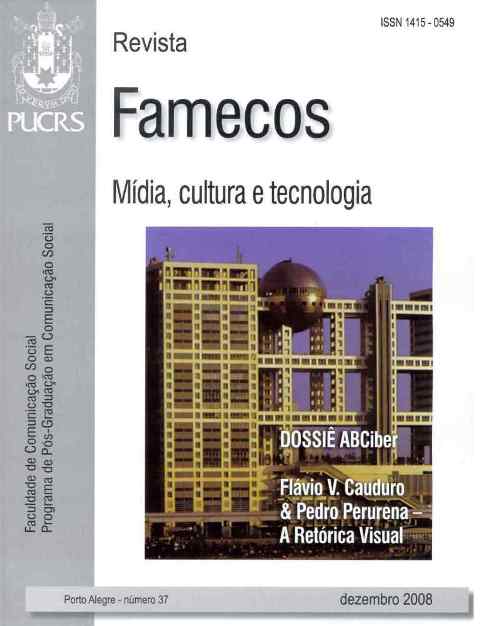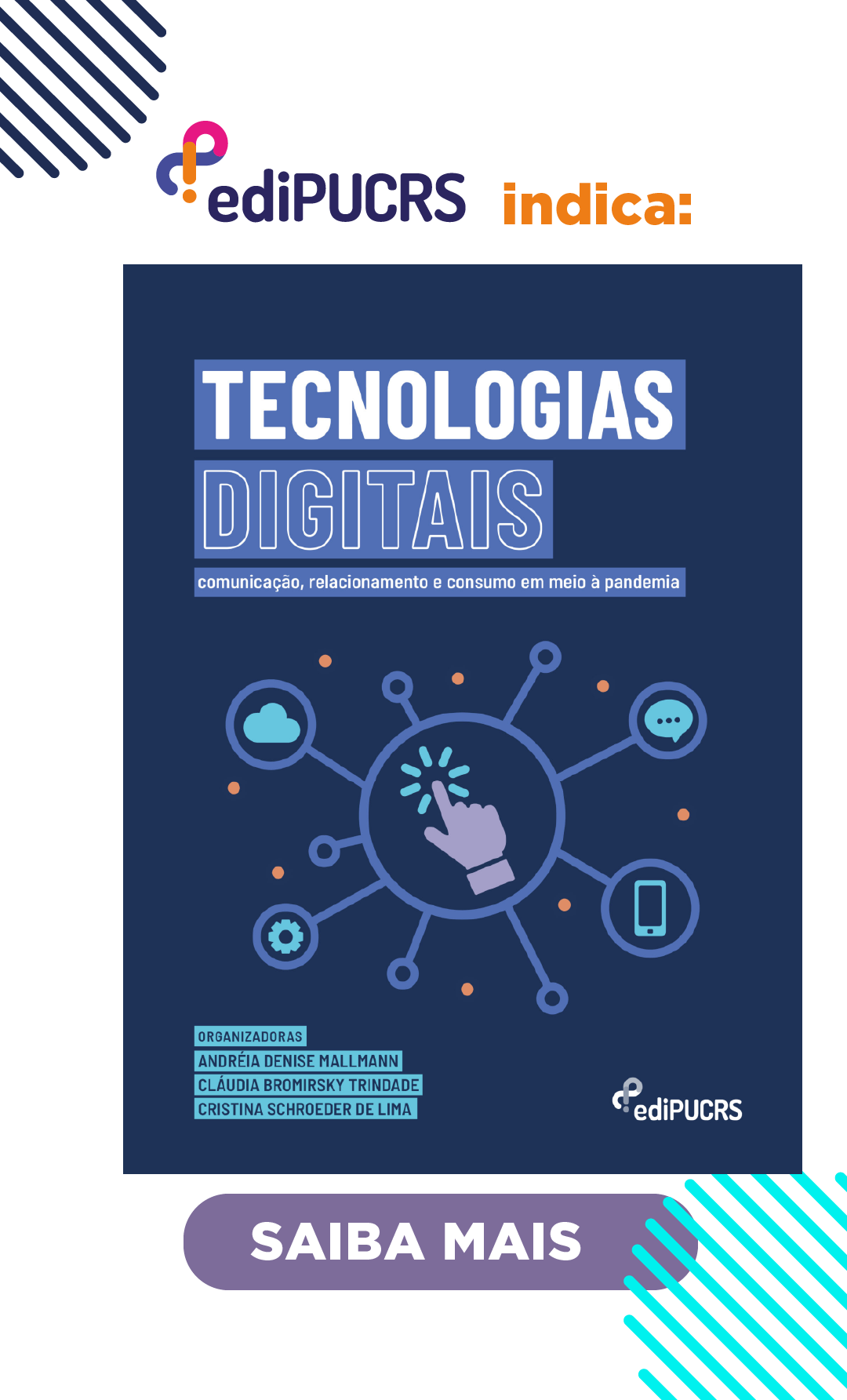Subculturas e cibercultura(s): para uma genealogia das identidades de um campo
DOI:
https://doi.org/10.15448/1980-3729.2008.37.4798Palavras-chave:
Cibercultura, subcultures, sociabilidadeResumo
O presente trabalho propõe uma genealogia dos conceitos de subcultura enquanto um dos elementos e mitos fundadores da cibercultura. Nosso objetivo é mapear as relações quase indistintas entre os processos de comunicação e sociabilidade de ordem subcultural, que já estavam presentes na constituição da cibercultura, a partir das diferentes contraculturas que a formataram (como os hackers, os cientistas, os ativistas, entre outros); e em suas atualizações e reconfigurações até sua disseminação a partir da potencialização das tecnologias de comunicação, especialmente na fragmentação dos inúmeros nichos e práticas sociais na Web.Downloads
Referências
AMARAL, Adriana. A potência do imaginário de Neuromancer nas origens da cibercultura. In: GIBSON, William. Neuromancer. Trad. Fábio Fernandes. São Paulo: Ed Aleph, 2008, p. 305-308.
______. Cybersubculturas e cybercenas. Explorações iniciais das práticas comunicacionais electro-goth na Internet. Revista FAMECOS, ed. 33, p. 21-28, dez. 2007. Disponível em: http://www.pucrs.br/famecos/pos/ Acesso em: 20 jan. 2008.
AMARAL, Adriana; DUARTE, Renata F.R. A subcultura cosplay no Orkut: comunicação e sociabilidade online e offline. In: BORELLI, Silvia H.S.; FREIRE FILHO, João (orgs). Culturas juvenis no século XXI. São Paulo: EDUC, 2008, p. 269-288.
ANDERSON, Chris. A cauda longa. Do mercado de massa para o mercado de nicho. São Paulo: Ed. Campus, 2006.
BARRAL, Étienne. Otaku – Os filhos do virtual. São Paulo: Ed. SENAC, 2000.
BARBROOK, Richard, CAMERON, Andy. Californian Ideology. In: LUDLOW, Peter (ed). Crypto anarchy, cybestates and pirate utopias. Cambridge: MIT Press, 2001.
BAYM, Nancy, LEDBETTER, Andrew. Tunes that Bind? Predicting Friendship Strength in a Music-Based Social Network, Aoir, 2008.
BELL, Kennedy, KENNEDY, Barbara M. (ed.). The cybercultures reader. New York, Routledge, 2000.
BENEDIKT, Michael (ed.). Cyberspace: first steps. Boston: MIT Press, 1994.
BROCKMAN, John. Encounters With the Cyber Elite. New York: Hardwired, 1996.
BUKATMAN, Scott. Terminal identity. The virtual subject in post-modern science fiction. Durham: Duke University Press, 1993.
BURKE, Peter. Hibridismo cultural. São Leopoldo: Unisinos, 2003.
CASPARY, Costa, MANZENREITER, Wolfram. From subculture to cybersubculture? The Japanese Noise alliance and the Internet. In: GOTTLIEB, Nanette, McLELLAND, Mark (ed.). Japanese cybercultures. New York: Routledge, 2003, p. 60-74.
CANEVACCI, Massimo. Culturas eXtremas. Mutações juvenis nos corpos das metrópoles. Rio de Janeiro: DP&A, 2005.
DERY, Mark. Escape velocity.Cyberculture at the end of the century. New York: Grove Press, 1997.
DIXON, Joan B., CASSIDY, Eric J. Virtual Futures. New York: Rouledge, 1998.
DONATH, Judith.S. Identity and Deception in the Virtual Community. In: SMITH, M.A., KOLLOCK, P. (eds.). Communities in Cyberspace. London: Routledge, 1999.
DUARTE, Renata F.R. Práticas comunicacionais e sociais dos cosplayers no Brasil: uma análise dos processos online e offline através do Orkut. Dissertação (Mestrado em Comunicação e Linguagens) - Universidade Tuiuti do Paraná, Curitiba, 2008.
FELINTO, Erick. Sem mapas para esses territórios: a cibercultura como campo do conhecimento. In: FREIRE FILHO, João; HERSCHMANN, Micael (orgs). Novos rumos da cultura da mídia. Indústrias, produtos, audiências. Rio de Janeiro: Mauad, 2007.
FERNANDES, Fábio. A Construção do imaginário ciborgue. O pós-humano na ficção científica, de Frankenstein ao século XXI. Tese (Doutorado em Comunicação e Semiótica) - Pontifícia Universidade Católica de São Paulo, São Paulo, 2008.
FREIRE FILHO, João. Reinvenções da resistência juvenil. Os estudos culturais e as micropolíticas do cotidiano. Rio de Janeiro: Mauad, 2007.
GELDER, Ken; THORNTON, Sarah (ed.). The subcultures reader. New York: Routledge, 1997.
GIBSON, William. William Gibson Interview by Ulrich Gutmair. 2008. Disponível em: http://voidmanufacturing.wordpress.com/2008/10/01/william-gibson-interview/ Acesso em: 5 set. 2008.
GIBSON, William. Reconhecimento de padrões. São Paulo: Ed. Aleph, 2004.
GOFFMAN, Ken, JOY, Dan. Counterculture through the ages. From Abraham to acid house. New York: Villard, 2004.
HAYTHORNTHWAITE, Caroline. Social networks and Internet connectivity effects. Information, Communication, & Society, v. 8, n. 2, p. 125-147, 2005.
HEBDIGE, Dick. Subculture: the meaning of style. London: Methuen, 1979.
HODKINSON, Paul. Interactive Online Journals and Individualisation. New Media and Society, v. 9, n. 4, 2007. Disponível em: http://www.paulhodkinson.co.uk/publications/hodkinsonnmsarticle.pdf Acesso em: 5 out. 2008.
______. Subcultural Blogging: Online Journals and Group Involvement Among UK Goths'. In: BRUNS, Axl, JACOBS, Y(eds.), Uses of Blogs, Peter Lang, 2006.
ITO, Mizuko. Living and learning with new media: Summary of Findings from the Digital Youth Project. The John D. and Catherine T. MacArthur Foundation Reports on Digital Media and Learning. 2008. Disponível em: http://digitalyouth.ischool.berkeley.edu/files/report/digitalyouth-WhitePaper.pdf Acesso em: 22 nov. 2008.
JENKINS, Henry. Fans, bloggers and gamers. Exploring participatory culture. NewYork: New York University Press, 2006
JENKINS, Henry, TULLOCH, John. Science Fiction Audiences: Doctor Who, Star Trek and Their Followers. London: Routledge, Chapman and Hall, 1995.
LEMOS, André. Cibercultura. Tecnologia e vida social na cultura contemporânea. Porto Alegre: Ed. Sulina, 2002.
LEVY, Steven. Hackers. Heroes of the computer revolution. New York: Anchor Press, 1984.
LIU, Hugo. Social Network profiles as taste performances. Journal of Computer-Mediated Communication, v. 13, n. 1, 2007, article 13. Disponível em: http://jcmc.indiana.edu/vol13/issue1/liu.html Acesso em: 10 set. 2008
MARTÍN-BARBERO, Jesús. A mudança na percepção da juventude: sociabilidades, tecnicidades e subjetividades entre os jovens. In: BORELLI, Silvia H.S., FREIRE FILHO, João.(orgs). Culturas juvenis no
século XXI. São Paulo: EDUC, 2008.
MACEK, Jakub. Defining cyberculture. 2005. Disponível em: http://macek.czechian.net/defining_cyberculture.htm Acesso em: 13 set. 2008.
MARTÍN-BARBERO, Jesús; AMÉZQUITA, Irma; MEDINA, Daniel; ARÉCHIGA, Yadel. Usos adolescentes de internet. Cibernautas e cibercreadores. Guadalajara, Departamento de Estudios Socioculturales del ITESO, 2003.
MUGGLETON, David, WEINZIERL, Rupert (ed.). The post-subcultures reader. New York: Berg, 2004.
RHEINGOLD, Howard. The virtual Community. Cambridge: MIT Press, 1993.
RECUERO, Raquel Cibercultura x Cultura de massa. Depoimento gravado no documentário Cibercultura. In: BUCHAUL, Luiza. Cibercultura. Rio de Janeiro, 2008.
ROSS, Seamus. Cyberculture, cultural asset management, and ethnohistory. In: Preserving the present for the future. Proceedings of Conferences on Strategies for the Internet Copenhagen. 2001. Disponível em: http://www.deflink.dk/eng/arkiv/dokumenter2.asp?id=695 Acesso em: 5 out. 2008.
RÜDIGER, Francisco. Cibercultura e pós-humanismo. Porto Alegre: EDIPUCRS, 2008.
THORNTON, Sarah. Club cultures. Music, media and subcultural capital. Connecticut: Wesleyan University Press, 1996.
TOFTS, Darren. Memory trade: a prehistory of cyberculture. Australia: Interface, 1998.
TURNER, Fred. From Counterculture to cyberculture. Stewart Brand, the Whole Earth Network and the Rise of the Digital Utopianism. Chicago: The University of Chicago Press, 2006.
Downloads
Publicado
Como Citar
Edição
Seção
Licença
Direitos Autorais
A submissão de originais para a Revista Famecos implica na transferência, pelos autores, dos direitos de publicação. Os direitos autorais para os artigos publicados nesta revista são do autor, com direitos da revista sobre a primeira publicação. Os autores somente poderão utilizar os mesmos resultados em outras publicações indicando claramente a Revista Famecos como o meio da publicação original.
Licença Creative Commons
Exceto onde especificado diferentemente, aplicam-se à matéria publicada neste periódico os termos de uma licença Creative Commons Atribuição 4.0 Internacional, que permite o uso irrestrito, a distribuição e a reprodução em qualquer meio desde que a publicação original seja corretamente citada.






